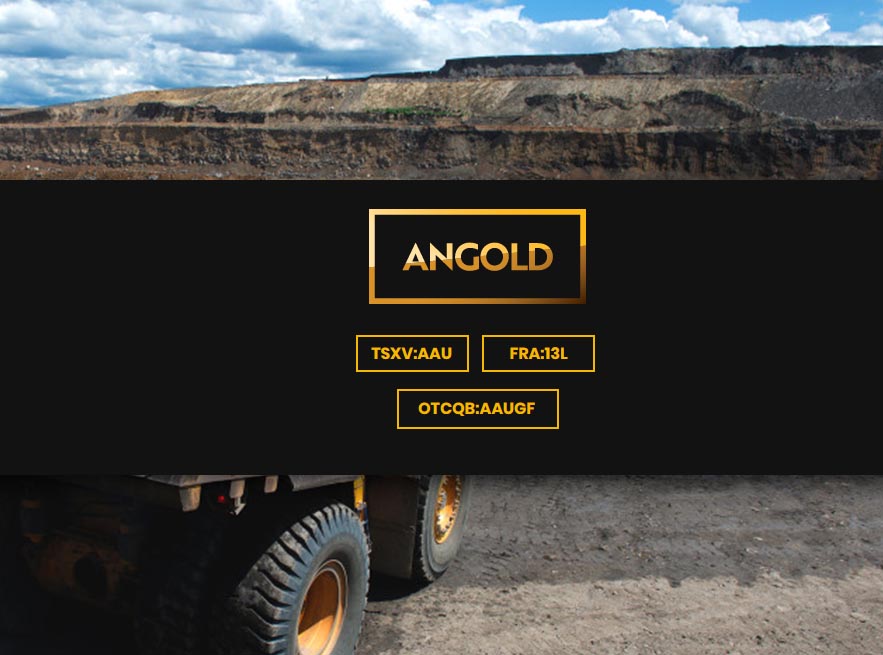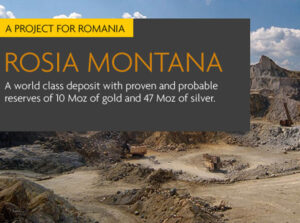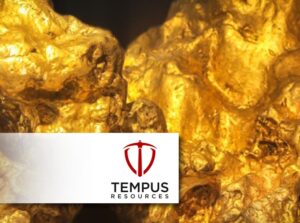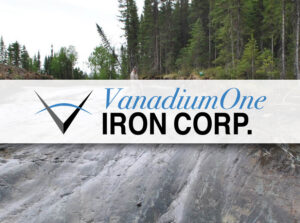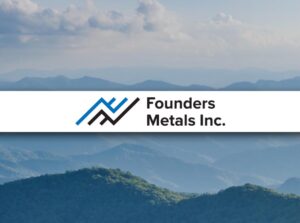COMPANY PRESS RELEASE
Angold Resources Ltd. (TSXV: AAU) is pleased to announce that it has received assays of high-grade gold samples up to 11.95 g/t gold (Au) from surface samples on its Cordillera project in the Maricunga Gold Belt of northern Chile. These results coincide with gold and copper/molybdenum in talus fines samples (up to 462 ppb gold and 557 ppm copper) and geophysical IP and magnetic anomalies.
The Cordillera project is strategically located three kilometres north of the Caspiche gold-rich porphyry copper deposit and eight kilometres south of the Maricunga porphyry gold deposit, with nine million ounces of historically mined gold. Caspiche is now amalgamated with Cerro Casale under the Norte Abierto Joint Venture, with combined 50 million ounces of gold and 12.5 billion pounds of copper.
Since the 1980’s, a steady stream of discoveries in the Maricunga Gold Belt, with over 100 million ounces of gold and more than a dozen mines, has grown this region into one of the world’s most prominent gold producers.
Angold’s CEO, Mr. Adrian Rothwell, stated:
“These results confirm the potential for a large high sulfidation epithermal system under shallow cover at Cordillera, with a foundation of excellent proximity to infrastructure and current operations. With completion of the recent systematic surface geology, Cordillera is now drill-ready for the upcoming field season with a number of highly prospective targets identified. Angold is quickly building momentum toward the discovery and advancement of multi-million ounce gold resources in Chile.”
Key Highlights
High Grade: Gold mineralization at Cordillera has been confirmed with grades of 11.95 g/t Au, 7.6 g/t Au, 5.0 g/t Au, 3.7 g/t Au, and others, distributed on at least five gold-anomalous zones.
Third Drill-Ready Project: Cordillera is now the third drill-ready project in Angold’s high-quality portfolio, along with Dorado (Chile) and Iron Butte (Nevada, USA). The Company is preparing for a drilling program at Cordillera in the upcoming 2021/22 drill season with these targets defined.
New Zones: Two new main zones (Figure 2) recognized on the Company’s exploitation concessions, separated by an NW-SE structural corridor, allowing different erosion/exposition levels.
Multiple Mineralization Targets: Results confirm the presence of five highly prospective drilling targets. Gold-rich epithermal quartz vein structures with hydrothermal breccias surround a mineralized Au-Cu diorite porphyry intrusion.
Coincident Anomalies: Geochemical results in elements such as Ag, As, Bi, Se, Te would indicate the existence of a near-surface high-sulfidation system.
The alteration signature and the mineralization noted on Cordillera are coincident and consistent with a near-surface high sulfidation epithermal gold system underlain by a deeper porphyry gold and copper deposit similar those at La Coipa and the nearby Norte Abierto Joint Venture.
The Cordillera project covers at least five high-sulfidation epithermal gold target zones related to strong west-northwest-striking faults within a 10-square-kilometer area of limited outcrop (see Figure 1). This area includes at least nine high-grade gold assays from bedrock samples, strongly anomalous geochemical results in gold and pathfinder elements, outcropping porphyry, hydrothermal and phreatic breccia intrusions, and sheeted or stockwork quartz-iron oxide or copper oxide veinlets.

- On the western zone, six high-grade samples from west-northwest-striking quartz veins in high-sulfidation epithermal altered volcanic tuff and quartz diorite porphyry, range from 1.00-11.96 g/t Au (Fig. 1). The zone is marked by a strong talus-fines geochemical anomaly with values up to 462 ppb. Two historic shallow drill holes intersected 1.3 g/t Au over 2 meters and 1.57 g/t Au over 10 m, including 6.4 g/t Au over 2 m. Historic small-scale mine workings attest to high-grade gold.
- On the northern zone, two high-grade samples from quartz-alunite-clay altered tuff and phreatic breccia assayed 0.69 g/t Au and 2.67 g/t Au within a gold geochemical anomaly.
- The central zone contains strongly silicified phreatic breccias with alunite alteration in an outcropping breccia about 160 m x 90 m in size and demonstrate gold mineralization.
- To the east and south, the Cordillera property is covered by thin post-mineral volcanics and sediments. On the southeastern zone, an high-grade sample of diorite porphyry assayed 0.70 g/t Au in an area of strongly silicified hydrothermal breccia and tuff float within a gold geochemical anomaly. In the far southeastern zone, three erosional windows through this cover expose float of high-sulfidation epithermal altered breccias and porphyritic intrusions. These sites are four km southeast of the western zone and indicate that a belt of alteration and mineralization could extend over at least this distance (Fig. 1).
- The north-eastern zone has geochemical values >330 ppb Au over altered diorite porphyry bedrock and is controlled by NNE major faults where they intersect the regional NNW structural trend.
The five high-sulfidation epithermal gold alteration target zones on the Cordillera Project are spread over a large area and clearly indicate a shallow level of erosion within an extensive, typical Maricunga type hydrothermal system. The project shows exceptional potential for discovery of underlying porphyry gold or gold-rich porphyry copper deposits.
The strategic location of the project a few kilometers from major gold deposits allows the company to benefit from geologic insights developed during discovery of these deposits.
Angold’s 2021 exploration included geologic mapping, bedrock sampling, spectral analysis, talus-fines geochemical sampling, and magnetic and IP/resistivity surveys. Phase I survey results over a small part of the property show strong geophysical contrasts and indicate that results from completed surveys should assist in targeting drill holes.
Following completion of geophysical surveys, the Cordillera Project will be ready for drilling.
Historic Exploration
The historical data from reverse circulation and diamond drilling indicate significant gold and silver mineralization up to 6.4 g/t gold over 2 metres, even though the holes were not correctly placed and did not reach deep targets.
Angold Resources completed an exploration program consisting of geologic and alteration mapping (>26 km2), rock sampling, grid talus fine geochemistry and pH, hyperspectral analysis on rocks and talus fines, and ASTER interpretation (Figure 5) on the Company’s concessions.
The Company completed its first systematic surface exploration program on Cordillera in 2021. This consisted of a total of 248 rock samples and 425 soil samples over a grid 5 km x 4 km, and more than 250 metres of trenching/samples.
Additionally, a recently completed IP and magnetic survey shows high chargeability anomalies and strong conductors from ground magnetic responses along mineralized quartz structures. This confirms the presence of gold and silver related to a near-surface high-sulfidation epithermal system; in addition, anomalous gold and copper results identified in intrusive quartz diorite units indicate potential for a deeper buried porphyry system.
Geophysics and IP Survey
The recent geophysical survey shows significant anomalies below the surface.
In May 2021, the Company carried out a ground magnetic survey over the post-mineral volcanic unit in addition to a 3D-IP study widely spaced. The initial high-quality data indicates significant geophysical anomalies in the Phase I program (Figure 9). A historic magnetic survey and one historic IP/resistivity line was also completed in March 2008 by Capella Resources (Figure 8).
Historic drilling confirms the correlation between high gold values and high chargeablity at Cordillera. The historic 5,800 m long IP line crossed the project, passing through known surface mineralization near historic drill hole T-2 (Figure 9). The high-chargeability anomalies on Cordillera demonstrate consistency across various geological data layers and will be the focus of the initial drill program at the project.
Geochemical and Geology
Angold’s initial exploration included 1:5,000 scale geological mapping, systematic rock sampling with spectral analyses, and pH/inverse-differential hydrogen (IDH) sampling over post-mineral cover.
Detailed geochemical interpretations of the surface samples have also shown a notable correlation between high-grade gold results and other pathfinder elements such as Ag, As, Bi, Se, Te, supporting the presence of a high-sulfidation epithermal and porphyry system below the surface.
QAQC Statement
All of Angold Resources’ surface sample assay results have been independently monitored through a quality assurance/quality control (“QA/QC”) protocol, which includes inserting blind standard reference materials, blanks, and duplicates at regular intervals. Rocks and talus fines samples were securely transported to ALS Laboratories’ (“ALS”) sample preparation facility in Copiapó, Chile.
Talus fines samples were prepared using ALS’ PREP-41 method and analyzed for 53 elements, including gold, by ALS’ method AuME-ST43, which uses aqua regia digestion and super-trace-level detection limits. For rock chips, the preparation method was PREP-31; analytical methods were Au-AA24 for gold and ME- MS61m for 49 elements with four-acid digestion.
Qualified Person
David Smith, CPG, a Qualified Person in accordance with National Instrument 43-101, has reviewed and approved the technical information contained in this news release.
About Angold
Angold is an exploration and development company targeting large-scale mineral systems in the proven districts of the Maricunga, Nevada and Ontario. Angold owns a 100% interest in the Dorado, Cordillera and South Bay-Uchi projects, and certain claims that append the optioned Iron Butte project.
ON BEHALF OF THE BOARD OF ANGOLD RESOURCES LTD.
“Adrian Rothwell”
Chief Executive Officer
Further information on Angold can be found on the Company’s website at www.angoldresources.com and at www.sedar.com, or by contacting the Company by email at investors@angoldresources.com or by telephone at (855) 917 4091.
Neither the TSX Venture Exchange nor its Regulation Services Provider (as that term is defined in the policies of the TSX Venture Exchange) accepts responsibility for the adequacy or accuracy of this release.
Forward-Looking Statements: This news release contains forward-looking statements and forward-looking information within the meaning of applicable securities laws. These statements relate to future events or future performance and includes expectations of the resumption of trading of the Company’s common shares on the Exchange. All statements other than statements of historical fact may be forward-looking statements or information. Forward-looking statements and information are often, but not always, identified by the use of words such as “appear”, “seek”, “anticipate”, “plan”, “continue”, “estimate”, “approximate”, “expect”, “may”, “will”, “project”, “predict”, “potential”, “targeting”, “intend”, “could”, “might”, “should”, “believe”, “would” and similar expressions. Forward-looking statements and information are provided for the purpose of providing information about the current expectations and plans of management of the Company relating to the future. Readers are cautioned that reliance on such statements and information may not be appropriate for other purposes, such as making investment decisions. Since forward-looking statements and information address future events and conditions, by their very nature they involve inherent risks and uncertainties. Actual results could differ materially from those currently anticipated due to a number of factors and risks. Accordingly, readers should not place undue reliance on the forward-looking statements, timelines and information contained in this news release.
Figure 4: Cordillera Project. Sample’s location (rock chip and soils).
Figure 9: Cordillera geophysical surveys (Angold, May 2021; Capella, 2008).
Figure 10: Cordillera geological map and IP survey (extracted plan from the 3D-model at 4,300 m)
Table 1: Gold results in rock samples from the recently completed exploration program.

